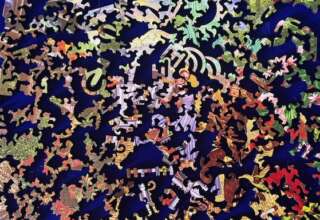
A similar intergenerational diversity seems to exist in America—both on the liberal and conservative side of the political spectrum. Perhaps, this is a bit of the “glue” that holds American (and Israeli) societies together. There are some settings of sociolpetal coming together—but there might have to be a shared cause or crisis to bring people out of their silos (at least in the United States). Unfortunately, these sociopetal settings also create new silos in the United States in which polarized groups of people cluster and reinforce one another beliefs and frequently misperceptions of the virus and public policies related to the virus. Furthermore, there is societal glue to be found in the silos of prejudices that are constructed and in the attendant desire to engage violence. These negative sociopetal forces do bring some citizens together with a shared cause. This is the enduring tragedy of a suspicion of and distain for the “other” that is all too commonly found in the United States.
The American “Other”
As we examine the nature and extent of social protests that occurred in the United States arising at least in part from the COVID-19 virus, there are several ways to approach this topic. We can look at the focus of the protest and at its source. While one would assume that the protest is being directed at the source, this is often not the case—especially when the source is elusive and anxiety-producing.
There are two primary focal points for protests in the United States. One focal point is the public policy being enacted in response to the virus—specifically these are the pharmaceutical and nonpharmaceutical initiatives that the American government has enacted (especially since the new Biden administration came to power). While one might disagree with the premise of the protests mounted against new initiatives and (in particular) new requirements, they are at least understandable given American individualism and wide-spread resistance to external locus of control. These are the perspectives and settings I have already described and need no further elaboration, other than to note that they have not always been peaceful. As in the case of Israel, there is a long history of social protest in the United States, and it is certainly to be expected in this instance.
The second focal point is much for disturbing. It relates to a particular way in which people tend to respond to diffuse fears associated with epidemics. Christakis (2020, p. 144) describes this tendency:
We respond to the fear brought on by epidemics in various ways. many of which are directed at asserting control over the threat. For example, people have a tendency to blame others for the disease. which makes them feel like they have some influence over the force that is affecting them. It is more soothing to feel that there is a human agent responsible for the problem, because this means human effort might be effective in response. It’s much more frightening to imagine that the plague originates from a vengeful, implacable god or from an uncaring and remorseless natural world.
Christakis has made an important point here that takes us back to the matter of where resides the locus of control when we confront the CVOVID virus. Do we have some control over the virus—or must we leave our fate and the fate of the virus to external forces over which we have no control? Christakis is suggesting that we can retain at least the semblance of control if we can place the blame on other people rather than a god or nature. We can always find someone to blame and punish as a way of retaining an internal locus of control. Supposedly it is not hurting us when we grab control and beat on someone else—though Menakem (2017) suggests that both the victim and victimizer are traumatized by the abuse (as are the people who are seeking to prevent or moderate the abuse).









